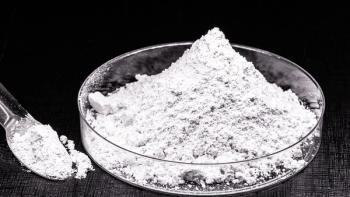The Medicines and Healthcare products Regulatory Agency (MHRA) has approved EURneffy 2 mg, a needle-free adrenaline nasal spray designed to treat anaphylaxis in adults and children weighing 30 kilograms (66 pounds) or more in the United Kingdom (1). It’s the first product of its kind authorized in the country, and its launch is anticipated in the latter half of 2025, following final market access negotiations.
This milestone approval introduces a fundamentally different route of administration for emergency adrenaline, delivered intranasally rather than via auto-injector (1). The shift comes as manufacturers and developers across the pharmaceutical industry continue to explore more intuitive, less invasive drug delivery formats that can meet real-world demands, particularly in high-stakes use cases like allergic reactions (2–6).
Redesigning emergency treatment with device innovation
Key Takeaways
·MHRA approval of EURneffy introduces the first nasal adrenaline spray for anaphylaxis, offering a needle-free alternative to traditional auto-injectors.
·EURneffy features 30-month shelf life and high temperature stability, addressing long-standing cold chain and storage challenges in pharma logistics.
·The product’s design reflects growing industry emphasis on human factors engineering to improve real-world usability and adherence in emergency drug delivery.
EURneffy’s design eliminates the needle entirely, a departure from decades of reliance on injection-based delivery (1). For patients and caregivers, this simplifies use during the chaotic moments of anaphylaxis, when speed and confidence are critical. It also opens new considerations for drug-device development: designing for intuitive usability while maintaining pharmacologic equivalence to injectable formats.
Henriette Mersebach, MD, executive vice president of research and development at ALK, emphasized this point in a statement, stating, “The approval of EURneffy 2 mg in the UK introduces an alternative and novel adrenaline treatment option for adult and adolescent patients with life-threatening allergies. EURneffy could improve the lives of people with severe allergic reactions and may facilitate that patients and caregivers continually carry adrenaline wherever they go" (1).
The product is also formulated to be stable for up to 30 months and at a wider range of temperatures than existing auto-injectors (1). This extended stability means fewer constraints in transportation and storage, allowing for broader reach and potentially reducing waste from expired inventory. It also reflects a growing focus within pharma on formulations that ease cold-chain requirements without compromising efficacy (7–11).
Clinical program supports pharmacological performance
MHRA approval followed a review of data from more than 700 participants enrolled in the EURneffy development program (1). Across a range of dosing scenarios, the pharmacokinetic and pharmacodynamic profiles of the nasal spray were consistent with those of traditional auto-injectors. No serious adverse events were reported during clinical studies.
Anaphylaxis affects approximately eight in every 100,000 people annually in Europe, and about one in 300 will experience it at some point in their lives (1). Despite this prevalence, hesitancy and misuse around auto-injectors remain common. EURneffy highlights how thoughtful design and delivery innovation can help improve adherence by minimizing user burden.
The nasal spray was originally developed by ARS Pharmaceuticals, based in the United States (1). In 2024, ALK entered into a licensing agreement with ARS to commercialize the product outside the United States, Australia, New Zealand, Japan, and China. The partnership expanded in 2025 to include co-promotion in the US market.
Although the approval marks a significant product development and regulatory milestone, the company noted it will not impact its financial guidance for 2025 (1).
References
- ALK. EURneffy Approved as the First Needle-free Anaphylaxis Treatment of Adults and Children in the UK. Press Release. July 18, 2025.
- Acumen Research and Consulting. Nasal Drug Delivery Technology Market Size - Global Industry, Share, Analysis, Trends and Forecast 2024 – 2032 (accessed July 18, 2025).
- The Business Research Company. Nasal Drug Delivery Technology Global Market Report 2025 – By Dosage Form (Nasal Spray, Nasal Drops, Nasal Gels And Ointments, Nasal Powders, Other Dosage Forms), By Container Type (Pressurized Containers, Non-Pressurized Containers), By Therapeutic Application (Allergic And Non-Allergic Rhinitis, Nasal Congestion, Asthma, Vaccination, Other Therapeutic Applications), By Distribution Channel (Hospital Pharmacies, Retail Pharmacies, Online Pharmacies), By End User (Home Care Settings, Hospitals) – Market Size, Trends, And Global Forecast 2025-2034 (accessed July 18, 2025).
- Mordor Intelligence. Nasal Drug Delivery Market Size & Share Analysis – Growth Trends & Forecasts (2025 – 2030) (access July 18, 2025).
- Grand View Research. Intranasal Drug and Vaccine Delivery Market Size, Share & Trends Analysis Report By Product, By Dosage (Deep Learning, Machine Learning), By Application, By Distribution Channel, By Region, And Segment Forecasts, 2025 – 2030 (access July 18, 2025).
- Fortune Business Insights. Nasal Drug Delivery Market Size, Share and Industry Analysis, By Type (Dry Powder Inhalers (DPIs), Metered Dose Inhalers (MDIs), and Nebulizers), By Application (Asthma, Chronic Obstructive Pulmonary Disease (COPD), and Others), By Distribution Channel (Hospital Pharmacies, Retail Pharmacies, and Online Pharmacies) and Regional Forecast, 2019-2032 (accessed July 18, 2025).
- Goebel, A. Improving Sustainability in Pharma Cold Chain. PharmaManufacturing.com. Dec. 9, 2024.
- Packaging Web Wire. Pharmaceutical Temperature Controlled Packaging Solutions Market Size Growth Acceleration During 2023- 2032 (accessed July 18, 2025).
- Shelley, S. The Road Ahead for the Pharma Cold Chain. BioPharmInternational.com. July 1, 2022.
- Market Research Intellect. Cold Chain Innovation - Transforming the Pharmaceutical Packaging Industry (accessed July 18, 2025).
- Towards Packaging. Pharmaceutical Temperature Controlled Packaging Solutions Market Investment Opportunities & Competitive Benchmarking (accessed July 18, 2025).





